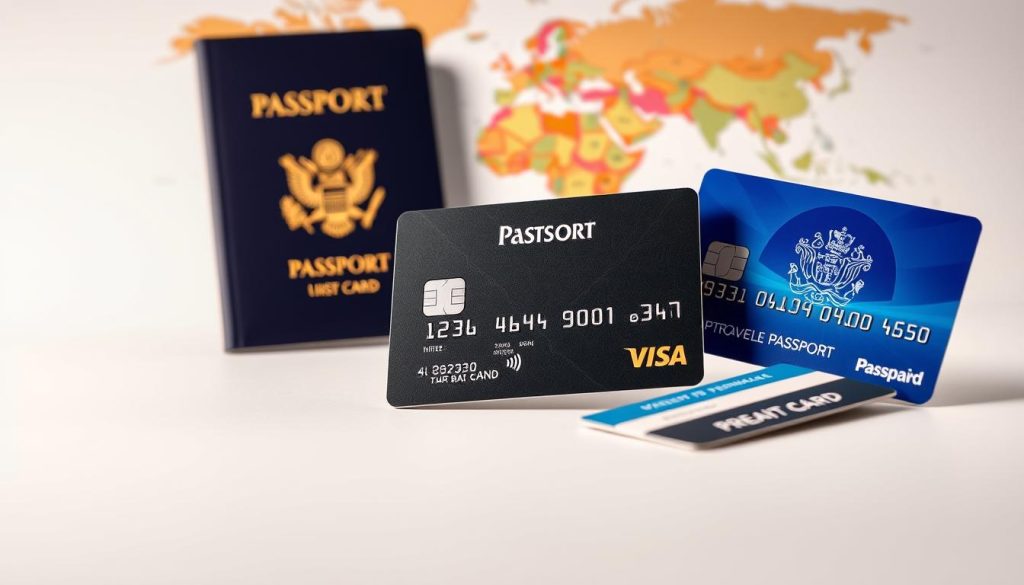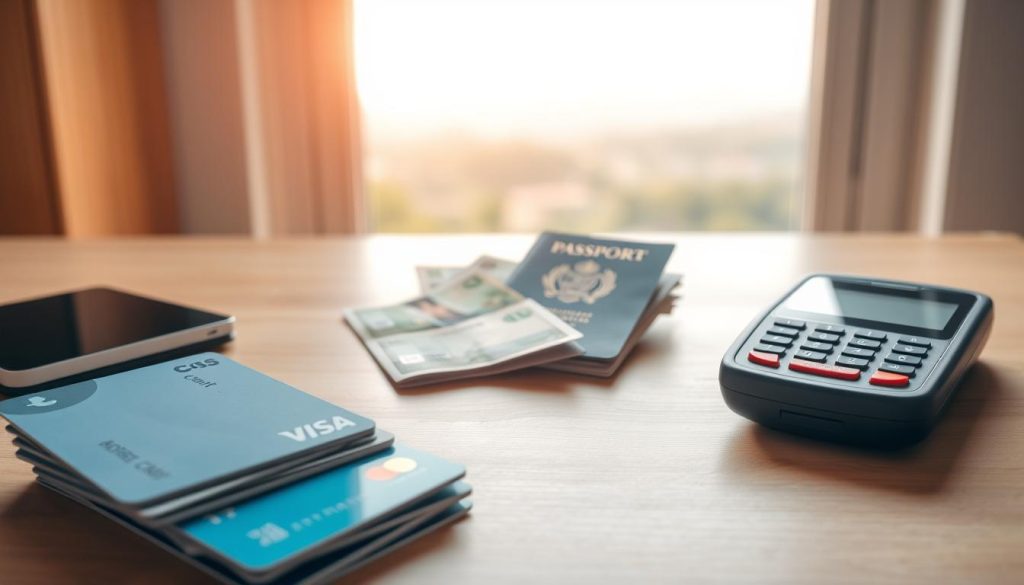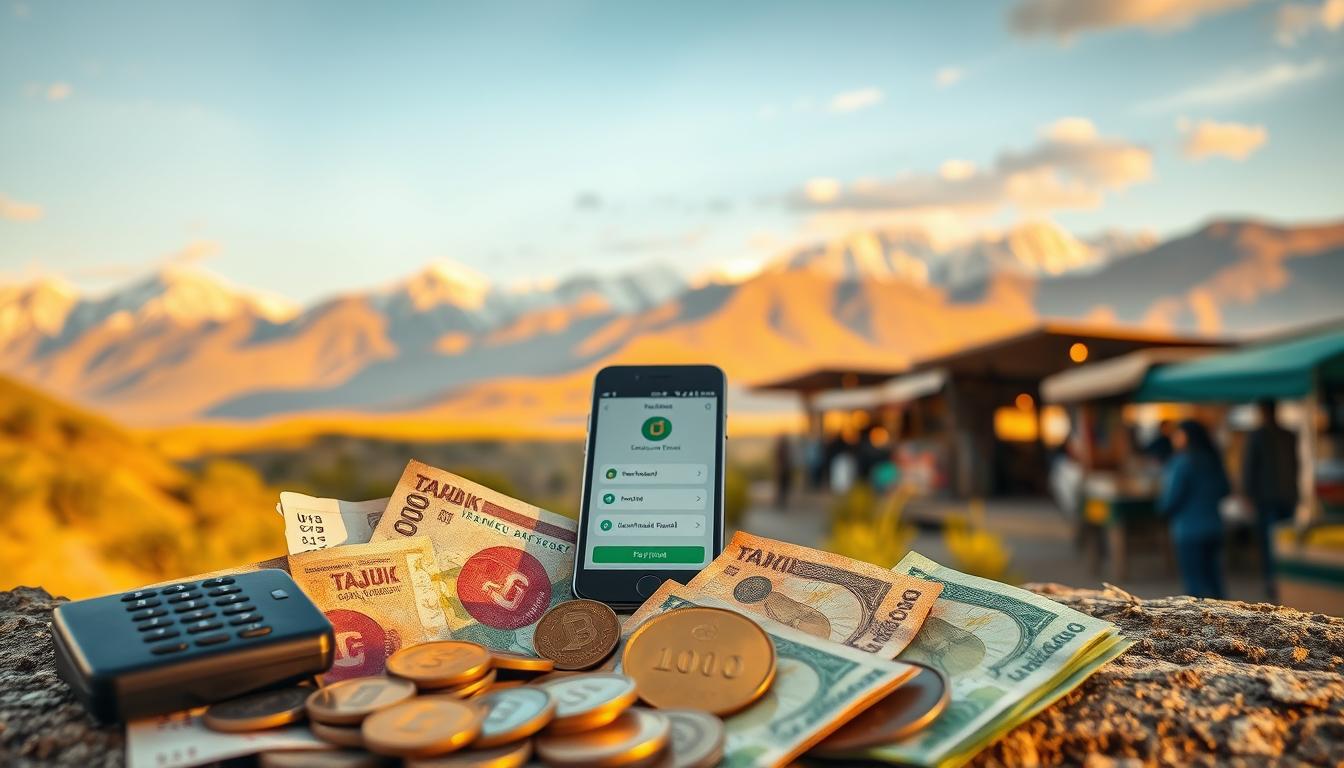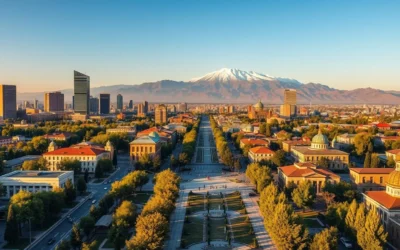✓ Accommodations✓ Flights✓ Rental Cars✓ Tours & Activities
Did you know that 93% of transactions in some countries are still cash-based? This surprising fact highlights the importance of understanding local payment methods when you’re on the road. Managing your money effectively can make or break your trip, especially in places where digital options are limited.
In this guide, we’ll walk you through everything you need to know about handling currency, using cards, and deciding when to rely on cash. From locking in favorable exchange rates to finding reliable ATMs, we’ve got you covered. Whether you’re dining at a local restaurant or booking a hotel, these tips will help you stay on budget and avoid unnecessary fees.
Traveling should be about exploring, not worrying about money. With the right information, you can focus on enjoying your trip while keeping your finances in check. Let’s dive in!
Introduction to Tajikistan’s Currency Landscape
Navigating a new country’s financial system can be tricky, but it’s essential for a smooth trip. Understanding how money works in your destination helps you avoid unnecessary stress and unexpected costs. Whether you’re dining at a local restaurant or booking a hotel, knowing your options is key.
The Importance of Understanding Local Payment Methods
In many places, cash is still king. This is especially true in areas where digital payments are less common. Carrying cash ensures you’re prepared for small purchases or places that don’t accept cards. However, relying solely on cash can be risky, so it’s wise to have a backup plan.
Using a travel money card can offer security and convenience. Providers like Revolut and Wise allow you to lock in favorable exchange rates before your trip. This can save you money and help you stick to your budget.
An Overview of Payment Options for Travelers
When traveling, you’ll encounter various payment methods. Cards are widely accepted in cities, but rural areas may require cash. Mobile wallets are gaining popularity, but their availability varies by region.
ATMs are a reliable way to access local currency, but be mindful of fees. Choosing a card with low withdrawal charges can make a big difference. For example, some providers offer free ATM withdrawals up to a certain limit.
Understanding exchange rates is another crucial tip. Rates can fluctuate, so locking in a good rate before your trip can save you money. Always compare rates from different providers to get the best deal.
By being informed about your payment options, you can focus on enjoying your trip without worrying about money. A little preparation goes a long way in ensuring a hassle-free experience.
Overview of the Tajikistani Somoni (TJS)
Understanding the local currency is a crucial step for any trip. The Tajikistani Somoni (TJS) is the official money used in the country. Introduced in 2000, it replaced the Tajikistani Ruble and is subdivided into 100 dirams. Knowing how to handle TJS can make your travel experience smoother and more enjoyable.
Currency Denominations and Design
The Somoni comes in both banknotes and coins. Banknotes are available in denominations of 1, 3, 5, 10, 20, 50, 100, 200, and 500 TJS. Each note features notable historical figures and unique design elements. For example, the 10 TJS note showcases a famous poet, while the 100 TJS highlights a national hero.
Coins are less commonly used but are available in smaller denominations like 1, 5, 10, 20, and 50 dirams. Recognizing these designs can help you avoid confusion when making purchases or exchanging money.
Key Factors in Exchange Rates
Exchange rates for the Somoni can vary based on several factors. These include global market trends, local economic conditions, and the policies of financial institutions. Mid-market rates are often the fairest, but local conversion fees can add extra costs.
Here’s a quick comparison of exchange options:
| Option | Pros | Cons |
|---|---|---|
| ATMs | Convenient, widely available in cities | Fees can be high |
| Banks | Reliable, fair rates | Long wait times |
| Airport Exchanges | Quick access | Poor rates, high fees |
Understanding these factors can help you budget better and avoid unnecessary expenses. For instance, using a card with low withdrawal fees can save you money over time. Always compare rates from different providers to get the best deal.
By familiarizing yourself with the Somoni’s design and exchange rate dynamics, you can make smarter financial decisions during your trip. This ensures you stay on budget and focus on enjoying your adventure.
The Rise of Travel Money Cards for International Trips
Travel money cards are transforming the way people handle finances abroad. These cards are designed specifically for secure international payments, offering convenience and peace of mind. Whether you’re dining at a restaurant or booking a hotel, they simplify your travel experience.

One of the biggest advantages is their flexibility. Unlike traditional bank cards, travel money cards allow you to load multiple currencies at competitive exchange rates. This means you can lock in a favorable rate before your trip, saving you money in the long run.
Security is another key benefit. These cards are not linked to your primary bank account, reducing the risk of fraud. If your card is lost or stolen, you can quickly block it without affecting your main funds. This makes them a safer option for international travel.
Features like tap-and-pay and ATM cash withdrawals add to their convenience. Many providers also offer low fees and flexible currency management, making them ideal for globetrotters. For example, cards like Revolut and Wise are popular choices for their user-friendly apps and competitive rates.
As more people discover these benefits, travel money cards are becoming a go-to option for international trips. They help you stay on budget while offering the security and flexibility you need. Consider exploring these cards for your next adventure—they might just be the perfect card for your journey.
Benefits of Using a Prepaid Travel Card for Tajikistan
Planning your finances for a trip abroad can feel overwhelming, but a prepaid travel card simplifies the process. These cards are designed to make your travel experience smoother by offering flexibility, security, and cost savings. Whether you’re exploring a new country or managing daily expenses, a prepaid card can be a game-changer.
Locking in Exchange Rates Before Departure
One of the biggest advantages of a prepaid travel card is the ability to lock in exchange rates before your trip. This protects you from market fluctuations and ensures you get a fair rate. For example, if the local currency weakens, you’ll still pay the rate you locked in, saving you money.
Topping up your card in advance also helps with budgeting. You can load the exact amount you need, avoiding overspending. This is especially useful in places where cash is still widely used, like rural areas.
Prepaid cards also reduce extra fees. Unlike traditional bank cards, many prepaid options have low or no foreign transaction charges. This can save you up to 3% per transaction, adding up significantly over time.
Security is another key benefit. Since prepaid cards aren’t linked to your primary bank account, they minimize the risk of fraud. If your card is lost or stolen, you can quickly block it without affecting your main funds.
Using a prepaid card brings predictable cost management while traveling. It’s a convenient and secure option that lets you focus on enjoying your trip rather than worrying about finances.
How to Choose the Best Travel Card for Tajikistan
Choosing the right travel card can make your journey hassle-free and cost-effective. With so many options available, it’s important to focus on features that align with your needs. Whether you’re exploring a new country or managing daily expenses, the right card can save you time and money.
Key Factors to Consider
When selecting a travel card, prioritize these aspects:
- Exchange Rates: Look for cards that offer competitive rates to maximize your spending power.
- Fees: Check for hidden charges like ATM withdrawal fees or foreign transaction costs.
- Currency Support: Ensure the card supports the local currency of your destination.
- Security Features: Opt for cards with fraud protection and easy blocking options.
Comparing Features and Fees
Here’s a quick comparison of popular travel cards:
| Provider | Exchange Rate | ATM Fees | Currency Support |
|---|---|---|---|
| Wise | Mid-market rate | Low | Multiple currencies |
| Revolut | Competitive | Free up to a limit | Wide range |
| Travelex | Fair | Moderate | Limited |
Consider your travel habits and budget when making a choice. For example, if you plan to withdraw cash frequently, a card with low ATM fees is ideal. On the other hand, if you prefer digital payments, focus on cards with strong exchange rate benefits.
By evaluating these factors, you can find a card that suits your needs and enhances your travel experience. A little research goes a long way in ensuring you stay on budget and enjoy your trip without financial stress.
Insights on Using Debit, Prepaid, and Credit Cards Abroad
When traveling abroad, your choice of payment method can significantly impact your experience. Understanding the differences between debit, prepaid, and credit cards helps you make informed decisions. Each card type has unique benefits and drawbacks, depending on your needs and destination.

Pros and Cons of Each Card Type
Debit Cards are linked directly to your bank account, making them a convenient option for accessing cash at ATMs. However, they often come with foreign transaction fees and may lack robust fraud protection. For example, some banks charge up to 3% per transaction abroad.
Prepaid Cards allow you to load a specific amount of money in advance, helping you stick to a budget. They typically offer competitive exchange rates and low fees. On the downside, reloading them can be inconvenient, and they may not be accepted everywhere.
Credit Cards are ideal for earning rewards like points or cashback on purchases. Many travel-focused cards also offer perks like travel insurance and purchase protection. However, they often come with annual fees and high interest rates if you carry a balance.
Here’s a quick comparison of the three:
- Debit Cards: Best for ATM withdrawals but may have high fees.
- Prepaid Cards: Great for budgeting but limited acceptance.
- Credit Cards: Perfect for rewards but can be costly.
Security is another key factor. Credit cards usually offer the best fraud protection, while prepaid cards are safer than carrying large amounts of cash. Debit cards fall somewhere in between, depending on your bank’s policies.
Choosing the right card depends on your travel habits. If you plan to withdraw cash frequently, a debit card might be your best bet. For digital payments and rewards, a credit card is ideal. Prepaid cards are a great middle ground for those who want to avoid overspending.
By understanding these differences, you can select the option that fits your needs and enhances your travel experience. A little preparation goes a long way in ensuring smooth financial transactions abroad.
Managing ATM Withdrawals and Avoiding Extra Fees
Managing your cash withdrawals wisely can save you both time and money during your travels. ATMs are a convenient way to access local currency, but fees can add up quickly if you’re not careful. Here’s how to make the most of your withdrawals while keeping costs low.
Tips for Choosing Low-Cost ATM Options
Not all ATMs are created equal. Some charge higher fees than others, so it’s worth doing a little research before you withdraw. Look for ATMs affiliated with major banks or low-cost providers like Wise or Revolut. These often offer better rates and lower fees compared to standalone machines.
Here are some practical tips to minimize fees:
- Withdraw larger amounts less frequently: This reduces the number of transactions and saves on per-withdrawal charges.
- Avoid dynamic currency conversion: Always choose to withdraw in the local currency to avoid poor exchange rates and hidden fees.
- Use travel-friendly cards: Cards like Wise and Revolut offer fee-free withdrawals up to a certain limit, making them a cost-effective option.
Dynamic currency conversion is a common pitfall. ATMs may offer to convert your withdrawal into your home currency, but this often comes with unfavorable rates and extra charges. Always decline this option to save money.
Security Tips for ATM Withdrawals
Safety is just as important as cost when withdrawing cash abroad. Here’s how to stay secure:
- Use ATMs in well-lit, secure locations: Avoid machines in isolated areas, especially at night.
- Cover the keypad: Shield your PIN from prying eyes or hidden cameras.
- Monitor your account: Regularly check your bank statements for unauthorized transactions.
By following these tips, you can manage your cash needs efficiently and securely. A little planning goes a long way in ensuring a hassle-free travel experience.
Payment Methods: Cash, Card, and Mobile Wallets
Payment methods vary widely, and knowing when to use each can save you time and money. Whether you’re exploring a new country or managing daily expenses, understanding your options is key. From cash to cards and mobile wallets, each method has its place in your travel toolkit.
When to Use Contactless vs. Cash Payments
Contactless payments are fast, secure, and increasingly popular in urban areas. Using a card or mobile wallet like Apple Pay can save you time at restaurants and shops. These methods are especially handy in busy cities where speed matters.
However, cash is still essential in many places. Small markets, rural areas, and tipping often require physical money. Carrying cash ensures you’re prepared for situations where digital payments aren’t accepted.
Managing Multiple Payment Options
Balancing cash, cards, and mobile wallets can be tricky, but it’s worth the effort. Here’s a quick guide to help you decide:
- Cash: Use for small purchases, tipping, and emergencies.
- Cards: Ideal for larger transactions and urban areas.
- Mobile Wallets: Great for quick, contactless payments in cities.
Mobile wallets are gaining traction globally, but their availability varies. In some countries, they’re widely accepted, while in others, cash remains king. For example, in Tajikistan, mobile wallets are becoming more common in urban centers, but cash is still preferred in rural areas.
Best Practices for Seamless Payments
Switching between payment methods doesn’t have to be stressful. Here are some tips:
| Method | Best Use Case | Tips |
|---|---|---|
| Cash | Small markets, tipping | Carry small denominations for convenience. |
| Card | Urban areas, larger purchases | Choose a card with low foreign transaction fees. |
| Mobile Wallet | Contactless payments | Ensure your device is charged and ready. |
By understanding these options, you can manage your money effectively and focus on enjoying your trip. A little preparation goes a long way in ensuring a smooth travel experience.
Tajikistan: Ultimate Travelers Guide to Currencies & Payments
Managing your finances while traveling doesn’t have to be stressful with the right preparation. This guide is designed to give you complete coverage of all things related to money and payments. From understanding local currency to choosing the best card, we’ve got you covered.
Throughout this guide, we’ve shared actionable tips to help you plan for secure and cost-effective payments. Whether you’re comparing fees, exchange rates, or service features, these insights ensure you make informed decisions. For example, using a modern travel card can save you both time and money.

One of the key takeaways is the importance of using multiple payment methods. While cards are convenient in cities, carrying cash is essential in rural areas. This balance ensures you’re prepared for any situation. Additionally, planning ahead can help you avoid unnecessary costs and fees.
We’ve also highlighted the benefits of comparing different providers and their features. For instance, some cards offer low ATM withdrawal fees, while others provide competitive exchange rates. These small details can make a big difference in your overall budget.
Remember, this guide is here to support you every step of the way. Refer back to specific sections as needed during your journey. With the right preparation, you can focus on enjoying your travel experience without worrying about finances.
Making the Most of Currency Exchange Rates
Getting the best value when exchanging money can make a big difference in your travel budget. Understanding how exchange rates work is key to controlling costs and maximizing your spending power. Here’s how you can make informed decisions and save money.
Exchange rates fluctuate based on factors like inflation, interest rates, and global market trends. Monitoring these changes before and during your trip can help you lock in favorable rates. For example, converting currency in advance often ensures you get a better deal.
- Compare rates: Banks and travel money cards often offer different rates. Research and choose the best option.
- Lock in rates early: Convert your money before rates drop to secure savings.
- Use transparent providers: Look for services with low fees and clear pricing structures.
For instance, travel money cards like Wise and Revolut provide competitive rates and low fees. These cards allow you to manage multiple currencies and avoid unnecessary charges. By choosing the right provider, you can keep more money in your pocket.
Smart exchange strategies also support overall budget management. Knowing when and where to convert your currency ensures you stay on track financially. This approach lets you focus on enjoying your trip without worrying about hidden costs.
Informed decisions lead to better outcomes. Whether you’re withdrawing cash from an ATM or using a travel card, understanding exchange rates empowers you to make the most of your money. With these tips, you’ll be well-prepared to handle your finances efficiently.
Essential Travel Tips for Your Tajikistan Trip
Smart planning can turn your trip into a seamless and budget-friendly adventure. By focusing on key strategies, you can manage your finances effectively and enjoy your journey without stress. Here’s how to make the most of your experience while staying on budget.
Budgeting and Cost Management Strategies
Start by setting a clear daily spending limit. For example, the average daily cost in Tajikistan is around $30 to $40, which includes meals, transportation, and activities. Booking flights and accommodations early can also save you money, as prices tend to rise closer to the travel date.
Balancing cash and card payments is crucial. While cards are convenient in cities, rural areas often rely on cash. Carry small denominations for local markets and tipping. Using a travel-friendly card with low fees can help you avoid unnecessary charges.
Monitoring your expenses is another key tip. Keep track of your spending to ensure you stay within your budget. Apps like Trail Wallet or Splitwise can help you manage your finances on the go.
Always set aside emergency funds. Unexpected situations can arise, and having backup payment methods like a prepaid card or extra cash ensures you’re prepared. Compare different providers to find the best rates and fees for your needs.
Proactive planning is your best ally. Research local costs, exchange rates, and payment options before your trip. This approach minimizes surprises and maximizes savings, allowing you to focus on enjoying your travel experience.
Best Travel Cards Recommended for Tajikistan
Selecting the right travel card can significantly enhance your financial flexibility abroad. With so many options available, it’s important to compare features, fees, and benefits to find the best fit for your needs. Let’s dive into a detailed analysis of popular choices like Wise and Revolut, along with other trusted providers.
Wise vs. Revolut: A Comparative Analysis
Wise and Revolut are two of the most popular travel cards on the market. Both offer competitive exchange rates and low fees, but they cater to slightly different needs.
Wise is known for its transparent pricing and mid-market exchange rates. It’s ideal for frequent travelers who need to manage multiple currencies. On the other hand, Revolut offers a sleek app experience and features like budgeting tools and cryptocurrency support. It’s perfect for tech-savvy users who want more than just a card.
Here’s a quick comparison:
- Wise: Best for transparent fees and multi-currency accounts.
- Revolut: Great for budgeting tools and innovative features.
Other Trusted Providers to Consider
Beyond Wise and Revolut, there are other reliable providers worth exploring. Travelex offers prepaid cards with fixed exchange rates, making it a good choice for budget-conscious travelers. Meanwhile, Monzo is praised for its user-friendly app and fee-free spending abroad.
Here’s a breakdown of their strengths:
- Travelex: Fixed rates and easy reload options.
- Monzo: No fees for international spending and real-time notifications.
Choosing the right card depends on your travel habits and preferences. Whether you prioritize low fees, budgeting tools, or multi-currency support, there’s an option that fits your needs. By comparing features and reading user reviews, you can make an informed decision and enjoy a hassle-free travel experience.
Ensuring Safety and Security in Financial Transactions
Keeping your finances secure while traveling is as important as packing your passport. Financial safety ensures peace of mind and lets you focus on enjoying your trip. Here’s how to protect your money and make secure transactions abroad.
One of the best ways to safeguard your funds is by using a travel card. Unlike traditional bank cards, travel cards aren’t directly linked to your primary account. This adds an extra layer of protection. If your card is lost or stolen, you can quickly block it without affecting your main funds.
Modern travel cards come with advanced security features. Two-factor authentication (2FA) ensures only you can access your account. Instant transaction alerts notify you of every purchase, helping you spot unauthorized activity immediately. Providers like Wise and Revolut are known for their robust security protocols.
Here are some tips to keep your payment details safe:
- Use secure networks: Avoid public Wi-Fi for financial transactions.
- Cover your PIN: Shield the keypad when entering your code at ATMs or shops.
- Monitor your account: Regularly check for unfamiliar charges.
In case your card is lost or stolen, act quickly. Most providers offer 24/7 support to block your card and issue a replacement. Having a backup payment method, like a prepaid card or extra cash, ensures you’re never stranded.
Secure financial transactions are essential for stress-free travel. By following these practices, you can protect your funds and focus on making unforgettable memories. A little preparation goes a long way in ensuring a smooth and safe journey.
Cost-Saving Strategies for Your Tajikistan Adventure
Every dollar saved on fees is a dollar you can spend on experiences. Managing your finances wisely while traveling ensures you stay on budget and avoid unnecessary costs. Here’s how to reduce transaction and service fees during your trip.
Choosing Low-Fee Providers
Not all financial providers are created equal. Some charge high fees for international transactions, while others offer competitive rates. For example, travel cards like Wise and Revolut are known for their low ATM withdrawal fees and transparent pricing.
Here’s a quick comparison of popular options:
| Provider | ATM Fees | Exchange Rate |
|---|---|---|
| Wise | Low | Mid-market rate |
| Revolut | Free up to a limit | Competitive |
| Travelex | Moderate | Fixed rate |
Smart ATM Withdrawals
ATMs are convenient, but fees can add up quickly. To minimize costs, withdraw larger amounts less frequently. Always decline dynamic currency conversion, as it often comes with poor rates and hidden charges.
Here are some tips to save on ATM fees:
- Use ATMs affiliated with major banks or low-cost providers.
- Withdraw in local currency to avoid extra conversion fees.
- Monitor your account for unauthorized transactions.
Using Prepaid Cards Wisely
Prepaid cards are a great way to stick to your budget. They allow you to lock in favorable exchange rates before your trip, protecting you from market fluctuations. Additionally, they’re not linked to your primary bank account, reducing the risk of fraud.
“A prepaid card is like a safety net for your finances—secure, flexible, and cost-effective.”
By following these strategies, you can keep your expenses low and focus on enjoying your travel experience. A little preparation goes a long way in ensuring a smooth and budget-friendly trip.
Preparing for Unexpected Financial Scenarios
Traveling can bring unexpected financial challenges, but being prepared ensures peace of mind. From lost cards to sudden expenses, having a backup plan can save your trip. Here’s how to stay financially secure and avoid disruptions.
Why Backup Payment Options Matter
Unexpected issues like a lost card or a closed ATM can leave you stranded. Carrying a secondary payment method, such as a backup credit card or a prepaid travel card, ensures you’re never without access to funds. This simple step can prevent major headaches during your journey.
Setting aside emergency cash is another smart move. While digital payments are convenient, cash is still essential in many places. A small reserve can cover immediate needs like transportation or meals if your primary payment method fails.

Steps to Create a Financial Safety Net
Here’s how to prepare for financial emergencies before your trip:
- Carry multiple payment methods: Bring a backup card and keep it separate from your primary one.
- Set aside emergency cash: Store small amounts in a secure place for unexpected situations.
- Notify your bank: Inform your provider about your travel dates to avoid blocked transactions.
- Use a travel money card: These cards offer security and flexibility, with options to lock in favorable rates.
Examples of Emergency Plans
An emergency plan doesn’t have to be complicated. For instance, if your primary card is lost, you can use your backup card for immediate expenses. Meanwhile, emergency cash can cover smaller purchases until you resolve the issue.
Here’s a quick comparison of backup options:
| Option | Pros | Cons |
|---|---|---|
| Backup Credit Card | Widely accepted, secure | May have annual fees |
| Prepaid Travel Card | Flexible, low fees | Limited acceptance in some areas |
| Emergency Cash | No reliance on technology | Risk of loss or theft |
By preparing for the unexpected, you can focus on enjoying your travel experience. Regularly review your emergency plans during your trip to ensure you’re always ready for any financial scenario.
Conclusion
Handling finances abroad doesn’t have to be complicated with the right strategies. This guide has equipped you with essential tips to manage your money efficiently, from choosing the best card to understanding local payment methods.
Using a travel card can save you time and reduce unnecessary fees. It’s also crucial to carry cash for smaller purchases and emergencies. By balancing these options, you’ll stay prepared for any situation.
Remember, planning ahead is key. Compare exchange rates, monitor fees, and always have a backup payment method. These steps ensure a stress-free and enjoyable travel experience.
Feel empowered to apply these strategies on your next trip. Share this guide with fellow travelers to help them stay financially savvy too. Safe travels!
The above is subject to change.
Check back often to TRAVEL.COM for the latest travel tips and deals.





